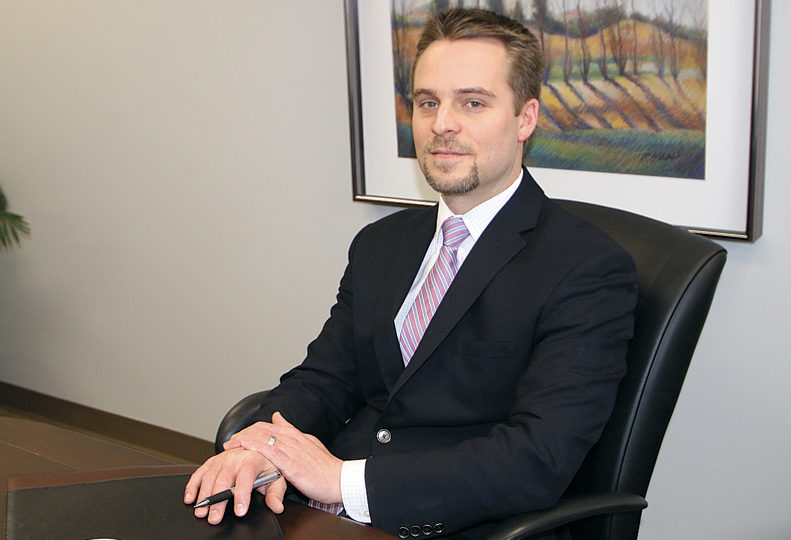
Home » Sexual harassment ruling expands employer liability in Washington state
Sexual harassment ruling expands employer liability in Washington state
If an employee harasses a customer, the business is 'automatically' at fault

February 14, 2019
Employers can be held strictly liable for acts of discrimination committed by their employees in any business or nonprofit open to the public following a recent Washington State Supreme Court decision in a sexual harassment case, Spokane-area attorneys familiar with the ruling say.
In the ruling filed Jan. 31 on the case known as Floeting v. Group Health Cooperative, the majority opinion written by Justice Steven Gonzalez says, “We hold that under the plain language of the Washington Law Against Discrimination, employers are directly liable for the sexual harassment of members of the public by their employees, just as they would be if their employees turned customers away because of their race, religion, or sexual orientation.”
John Drake, a partner at Spokane-based law firm Witherspoon Brajcich McPhee PLLC, asserts courts have been interpreting the discrimination law in a way that’s gradually more favorable to people who are bringing claims under the law.
In the case, originally filed nearly three years ago in King County Superior Court, Christopher Floeting, a member of the Seattle-based Group Health network, alleged he was sexually harassed repeatedly beginning in 2012 by a Group Health employee during regularly scheduled medical appointments.
Group Health investigated the member’s original complaint of harassment and fired the employee.
The member then sued Group Health, and the state high court ultimately determined the health network was directly liable for its employee’s “unwelcome and offensive sexual conduct.”
Drake contends the ruling sets a new precedent.
He says, “The big fight is: Do we apply the same standard an employee would have to meet in an employee-on-employee harassment, or do we adopt a lower standard for the third-party, public-accommodation context?”
The Floeting v. Group Health ruling answers that question. Under that standard, Drake says, the business is automatically liable for the discriminatory actions of its employees, even if the business initially is unaware of the misconduct and takes remedial action, such as retraining, suspension, or termination, when the conduct is discovered.
“Unlike in other contexts, there is no opportunity for the business to show it was not at fault,” he says.
In an employee-on-employee harassment claim, the plaintiff would have to show that the business owner knew or should have known about the harassment and failed to take corrective action in order to prevail on a claim like this, Drake asserts.
Angela Hayes, senior legal counsel with Associated Industries of the Inland Northwest, a Spokane-based employer consulting services provider, says the new ruling puts the employers in a difficult position.
“I think that will be very concerning for employers. I think they will feel like this is another burden that’s being imposed on the employers that’s going to be hard for them to control and probably will feel frustrating for employers,” Hayes says.
Although Hayes hasn’t discussed the recent ruling yet with members, she anticipates this will be an issue that will draw questions and concerns.
Hayes says the section of the discrimination law that calls for direct liability on employers for the discriminatory conduct imposes a different standard than the law regarding an employer’s liability for unlawful harassment in the employment relationship.
Not all of the justices felt there should be two standards. In dissenting minority opinion accompanying the majority opinion, Justice Barbara Madsen wrote: “It makes no sense that a business proprietor enjoys more protection for instances of workplace discrimination where they are more likely to know of discrimination directed at other employees within the workplace than instances where a nonsupervisory employee discriminates against a fleeting patron. An employer should at least be in the best position to rectify the misconduct before we impose strict vicarious liability for the conduct of its employees.”
Timothy Nault, an attorney with Spokane law firm Randall Danskin PS, says businesses with any kind of public interaction, such as lodging, retail, food service industries, medical and educational institutions need to take greater precautions to avoid being sued.
Business owners should implement strong measures with strict zero-tolerance sexual harassment policies, he says.
Drake says, however, that once a business is taken to court based on an employee-on-customer sexual harassment claim, it has a few choices. Sometimes, the plaintiff attorney can come up with a settlement that the two parties can agree on to avoid further action.
An employer who takes the case to trial and loses likely will have to pay the plaintiff’s attorney fees, he says.
“That can easily be half a million dollars or far more, if it’s a complex case,” Drake says.
In such a case, the plaintiff attorney fees might greatly surpass, say, a $10,000 damage award to the client, he contends.
“Courts have the authority to reduce the (attorney fees) award to be more proportional to the amount of damages that were recovered, but that doesn’t happen very often,” he says.
Depending on factors such as the strength of claim, examination of evidence, and witness testimonies, the trial process can take anywhere between six months and 2 1/2 years, with the longer duration equaling higher costs, Drake says.
Business owners can look into getting employment practices liability insurance, a specific type of insurance covering claims made for harassment or other types of discrimination that occur in the employee-on-employee context. Drake suggests, however, that businesses make sure the insurance has coverage for third-party claims.
Latest News Government Retail
Related Articles
Related Products



